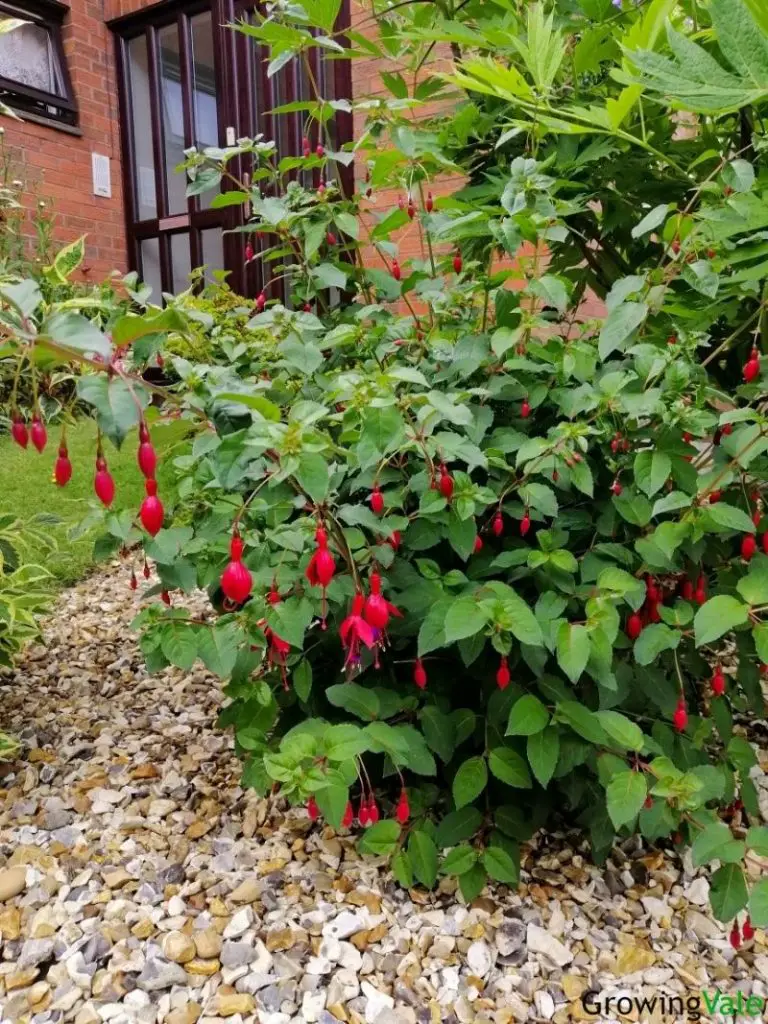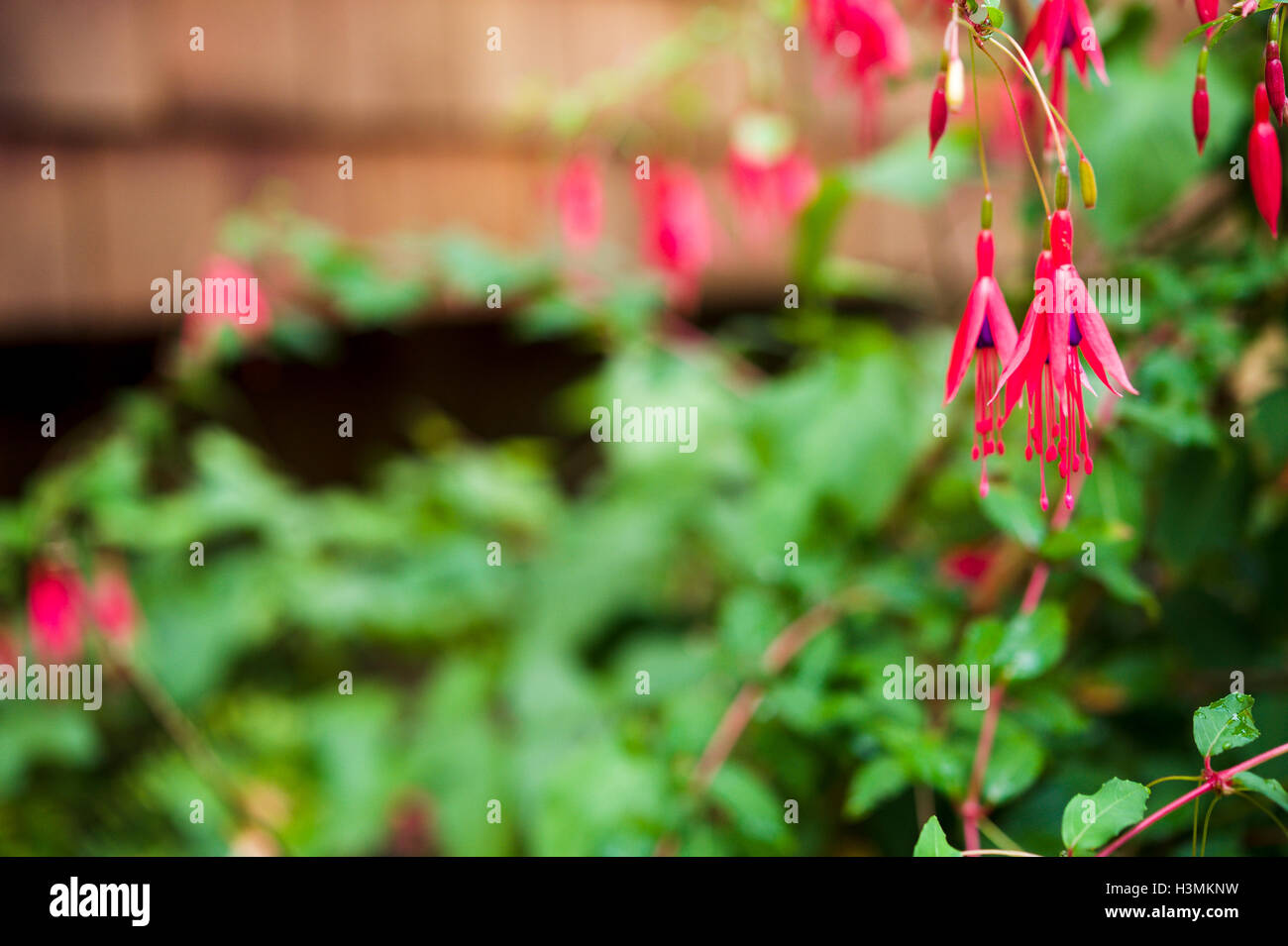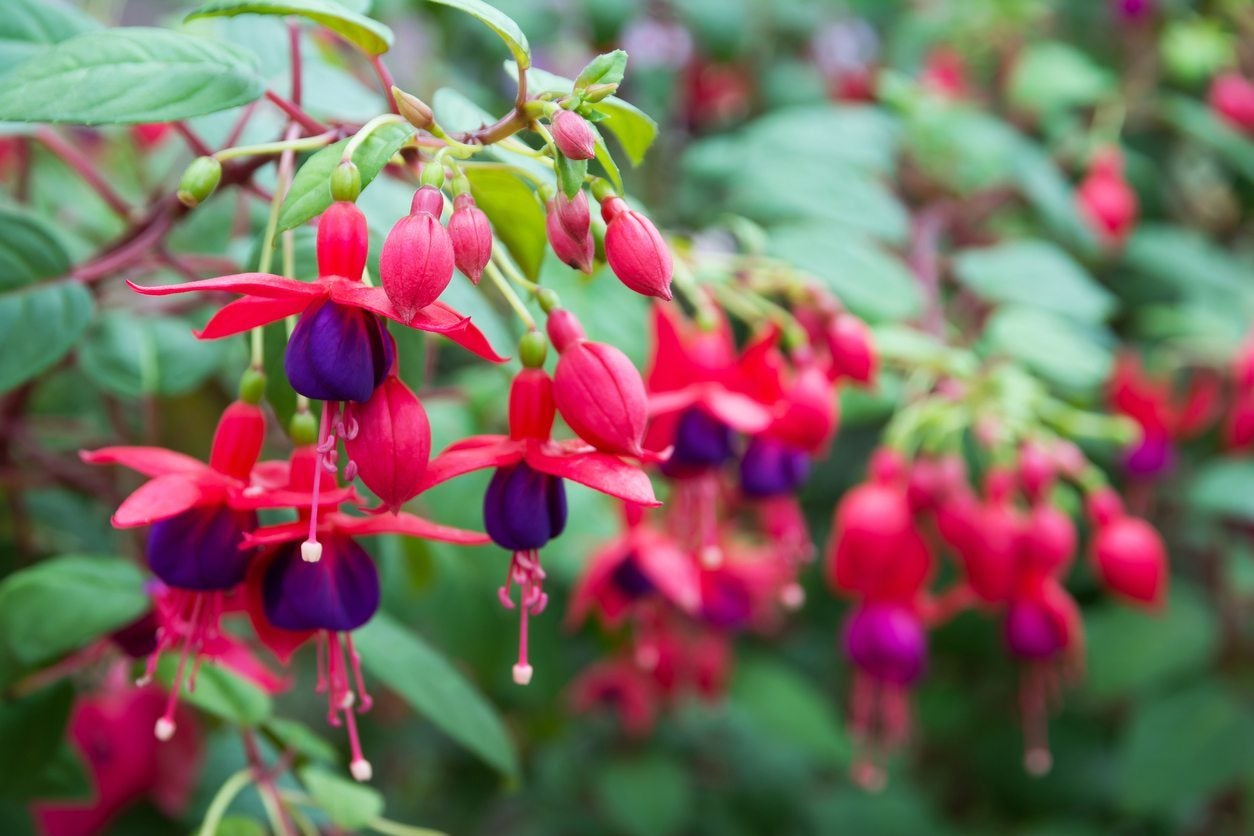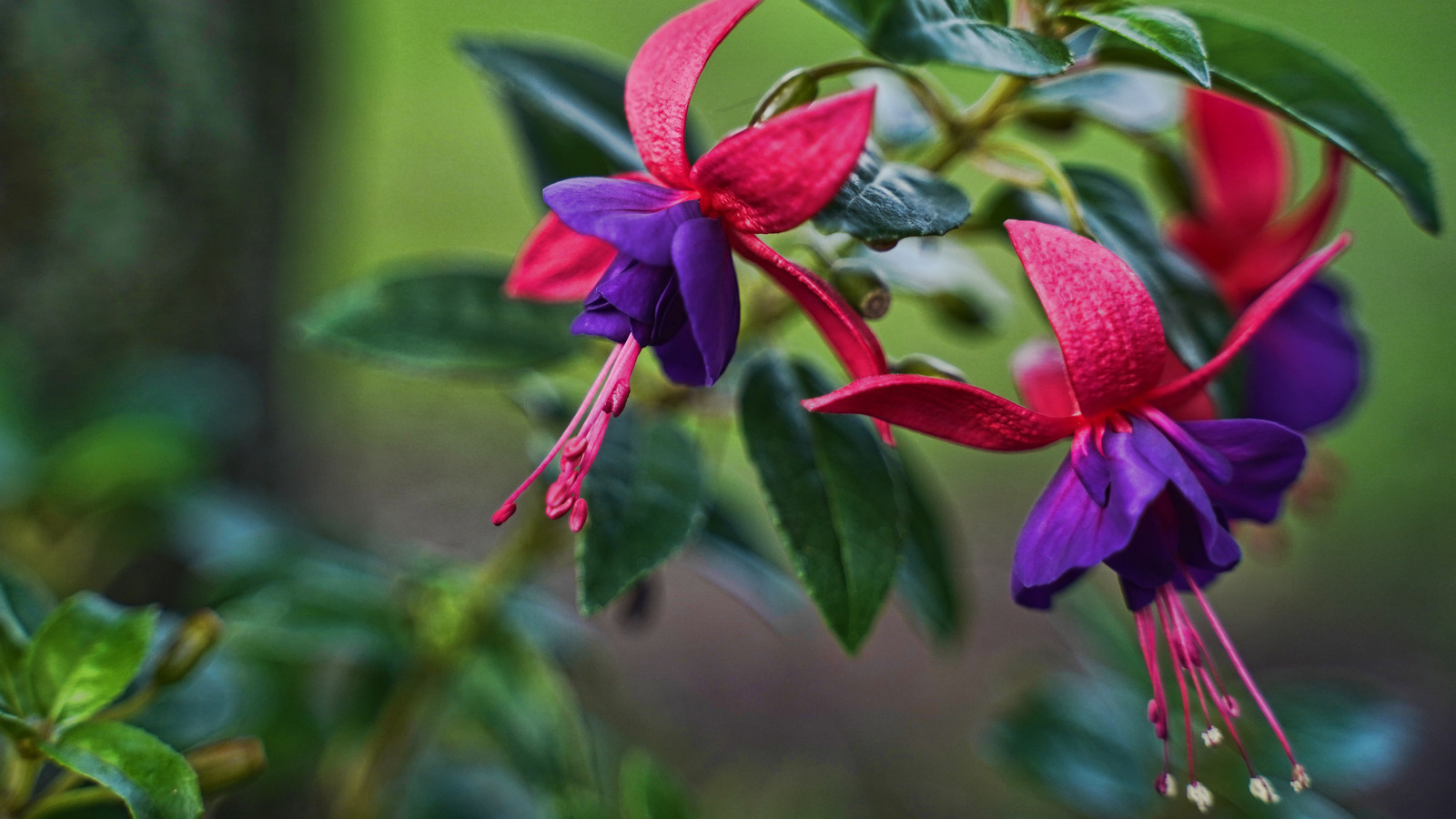Understanding Fuchsia Plant Life Cycles
Fuchsia plants are known for their vibrant, delicate flowers that bloom in a variety of colors, including pink, purple, and white. But have you ever wondered how long fuchsia bloom? The answer lies in understanding the plant’s life cycle. Fuchsia plants typically bloom in the summer months, but the exact duration of the blooming period can vary depending on factors such as climate, soil quality, and light exposure.
In general, fuchsia plants bloom for around 3-6 months, with some varieties blooming for longer periods than others. For example, the ‘Giant’ fuchsia variety is known to bloom for up to 6 months, while the ‘Trailing’ variety blooms for around 3-4 months. Understanding the life cycle of your fuchsia plant is crucial in determining how long it will bloom.
The life cycle of a fuchsia plant consists of several stages, including germination, growth, flowering, and dormancy. During the germination stage, the seedling emerges from the soil and begins to grow. As the plant grows, it produces leaves and stems, which eventually lead to the formation of flowers. The flowering stage is the most critical stage in the life cycle of a fuchsia plant, as it determines the duration of the blooming period.
Factors such as temperature, humidity, and light exposure can impact the duration of the blooming period. For example, fuchsia plants that are exposed to high temperatures and low humidity may bloom for shorter periods than those that are exposed to cooler temperatures and higher humidity. Similarly, fuchsia plants that receive adequate light exposure may bloom for longer periods than those that receive inadequate light.
By understanding the life cycle of your fuchsia plant and the factors that impact the duration of the blooming period, you can take steps to optimize the growing conditions and encourage longer blooming periods. This may include providing adequate light exposure, maintaining optimal temperatures and humidity levels, and fertilizing the plant regularly.
Factors Affecting Fuchsia Blooming Duration
When it comes to determining how long fuchsia bloom, several factors come into play. Temperature, humidity, and fertilization are just a few of the key elements that can impact the length of time fuchsia plants bloom. Understanding how these factors influence the blooming period can help you optimize conditions for longer blooming periods.
Temperature is one of the most significant factors affecting fuchsia blooming duration. Fuchsia plants typically thrive in temperatures between 65°F and 75°F (18°C and 24°C). If the temperature is too high or too low, it can impact the blooming period. For example, if the temperature is consistently above 80°F (27°C), the blooming period may be shorter. On the other hand, if the temperature is consistently below 60°F (16°C), the blooming period may be longer.
Humidity is another crucial factor that can impact fuchsia blooming duration. Fuchsia plants prefer a relatively high humidity, typically above 50%. If the humidity is too low, it can cause the plant to drop its flowers, reducing the blooming period. On the other hand, if the humidity is too high, it can lead to fungal diseases, which can also impact the blooming period.
Fertilization is also essential for promoting longer blooming periods in fuchsia plants. A balanced fertilizer that is high in phosphorus can help promote blooming. However, over-fertilization can have the opposite effect, reducing the blooming period. It’s essential to fertilize fuchsia plants regularly, but avoid over-fertilizing, as this can cause more harm than good.
In addition to temperature, humidity, and fertilization, other factors such as light exposure, soil quality, and pruning can also impact fuchsia blooming duration. By understanding how these factors influence the blooming period, you can take steps to optimize conditions and encourage longer blooming periods.
For example, providing fuchsia plants with bright, indirect light can help promote longer blooming periods. Similarly, using high-quality potting soil that is rich in organic matter can help promote healthy growth and blooming. Regular pruning can also help promote longer blooming periods by encouraging the plant to produce more flowers.
By understanding the factors that affect fuchsia blooming duration, you can take steps to optimize conditions and encourage longer blooming periods. This can help you enjoy the beautiful flowers of your fuchsia plant for a longer period, and make the most of your gardening efforts.
How to Encourage Longer Blooming Periods in Fuchsia
Encouraging longer blooming periods in fuchsia plants requires regular maintenance and attention to detail. By following a few simple tips, you can help extend the blooming period of your fuchsia plants and enjoy their beautiful flowers for a longer time.
Deadheading is one of the most effective ways to encourage longer blooming periods in fuchsia plants. Deadheading involves removing spent flowers from the plant, which helps to promote new flower growth and extend the blooming period. To deadhead your fuchsia plant, simply snip off the spent flowers with a pair of scissors or pinch them off with your fingers.
Pruning is another important technique for encouraging longer blooming periods in fuchsia plants. Pruning involves cutting back the plant to promote new growth and encourage more flowers to form. To prune your fuchsia plant, cut back the stems to about half their height after the plant has finished blooming. This will help to promote new growth and encourage more flowers to form.
Providing support is also essential for encouraging longer blooming periods in fuchsia plants. Fuchsia plants can become top-heavy with flowers, which can cause them to flop over and reduce the blooming period. To provide support, simply stake the plant with a bamboo stake or trellis, or use a plant cage to keep the stems upright.
Regular fertilization is also important for encouraging longer blooming periods in fuchsia plants. Fertilizing your fuchsia plant regularly will help to promote healthy growth and encourage more flowers to form. Use a balanced fertilizer that is high in phosphorus, which will help to promote blooming.
In addition to deadheading, pruning, providing support, and fertilizing, there are a few other tips you can follow to encourage longer blooming periods in fuchsia plants. For example, make sure to plant your fuchsia in a location that receives bright, indirect light, and keep the soil consistently moist but not waterlogged. Avoid over-watering, which can cause the roots to rot and reduce the blooming period.
By following these tips, you can help encourage longer blooming periods in your fuchsia plants and enjoy their beautiful flowers for a longer time. Remember to be patient and consistent in your care, as this will help to promote healthy growth and encourage more flowers to form.
Fuchsia Varieties with Longer Blooming Periods
While fuchsia plants are known for their vibrant, delicate flowers, some varieties are more prone to longer blooming periods than others. If you’re looking to maximize the blooming period of your fuchsia plants, consider growing varieties that are known for their extended blooming periods.
One popular variety of fuchsia that is known for its longer blooming period is the ‘Giant’ fuchsia. This variety produces large, showy flowers that can bloom for up to 6 months, making it a great choice for gardeners who want to enjoy their fuchsia plants for an extended period.
Another variety of fuchsia that is known for its longer blooming period is the ‘Trailing’ fuchsia. This variety produces long, trailing stems that are covered in small, delicate flowers that can bloom for up to 4 months. The ‘Trailing’ fuchsia is a great choice for hanging baskets or containers, where it can spill over the edges and create a beautiful display of flowers.
In addition to the ‘Giant’ and ‘Trailing’ varieties, there are several other types of fuchsia that are known for their longer blooming periods. These include the ‘Delta’s Sarah’ fuchsia, which produces large, pink flowers that can bloom for up to 5 months, and the ‘Swingtime’ fuchsia, which produces small, white flowers that can bloom for up to 4 months.
When growing fuchsia varieties with longer blooming periods, it’s essential to provide them with the right growing conditions. This includes providing them with bright, indirect light, and keeping the soil consistently moist but not waterlogged. Regular fertilization can also help to promote healthy growth and encourage more flowers to form.
In terms of garden design, fuchsia varieties with longer blooming periods can be used in a variety of ways. They can be grown in containers or hanging baskets, where they can spill over the edges and create a beautiful display of flowers. They can also be grown in the ground, where they can be used as a border plant or a specimen plant.
Overall, fuchsia varieties with longer blooming periods are a great choice for gardeners who want to enjoy their fuchsia plants for an extended period. By providing them with the right growing conditions and using them in creative ways in garden design, you can maximize the blooming period of your fuchsia plants and enjoy their beautiful flowers for months to come.
Common Mistakes to Avoid When Growing Fuchsia
When growing fuchsia plants, there are several common mistakes that can impact the blooming period. By avoiding these mistakes, you can help ensure that your fuchsia plants bloom for a longer period and produce more flowers.
One of the most common mistakes to avoid when growing fuchsia is over-watering. Fuchsia plants prefer well-draining soil and can be susceptible to root rot if the soil is too wet. To avoid over-watering, make sure to check the soil regularly and only water when it feels dry to the touch.
Another mistake to avoid is under-fertilizing. Fuchsia plants require regular fertilization to produce plenty of flowers. Use a balanced fertilizer that is high in phosphorus, which will help to promote blooming. Avoid using too much fertilizer, as this can cause the plant to produce more leaves than flowers.
Inadequate light exposure is another common mistake to avoid when growing fuchsia. Fuchsia plants prefer bright, indirect light and can produce more flowers if they receive enough light. If you’re growing fuchsia in a container, make sure to place it in a location that receives plenty of light.
Not providing enough support is another mistake to avoid when growing fuchsia. Fuchsia plants can become top-heavy with flowers and may require support to prevent them from falling over. Use a stake or trellis to provide support and keep the plant upright.
Finally, not deadheading regularly is another mistake to avoid when growing fuchsia. Deadheading involves removing spent flowers from the plant, which helps to promote new flower growth and extend the blooming period. Make sure to deadhead your fuchsia plant regularly to encourage more flowers to form.
By avoiding these common mistakes, you can help ensure that your fuchsia plants bloom for a longer period and produce more flowers. Remember to provide your fuchsia plants with the right growing conditions, including plenty of light, water, and fertilizer, and to deadhead regularly to encourage more flowers to form.
In addition to avoiding these mistakes, there are several other tips you can follow to optimize the growing conditions for your fuchsia plants. For example, make sure to plant your fuchsia in well-draining soil and provide it with plenty of air circulation. This will help to prevent disease and promote healthy growth.
By following these tips and avoiding common mistakes, you can help ensure that your fuchsia plants bloom for a longer period and produce more flowers. With proper care and attention, your fuchsia plants can thrive and provide you with plenty of beautiful flowers to enjoy.
How to Extend the Fuchsia Blooming Season
While fuchsia plants typically bloom in the summer months, there are several ways to extend the blooming season and enjoy these beautiful flowers for a longer period. One way to extend the blooming season is to use greenhouses or cold frames. These structures provide a protected environment for the plants, allowing them to bloom for a longer period.
Greenhouses are ideal for extending the fuchsia blooming season because they provide a warm and humid environment that is perfect for fuchsia plants. By using a greenhouse, you can extend the blooming season by several weeks or even months. However, greenhouses can be expensive and may not be feasible for all gardeners.
Cold frames are another option for extending the fuchsia blooming season. Cold frames are essentially boxes with transparent lids that allow sunlight to enter and warm the interior. They are less expensive than greenhouses and can be used to extend the blooming season by several weeks.
Indoor containers are also a great way to extend the fuchsia blooming season. By growing fuchsia plants in indoor containers, you can control the temperature and humidity levels, allowing the plants to bloom for a longer period. Indoor containers also provide protection from extreme weather conditions, such as frost and heatwaves.
When using greenhouses, cold frames, or indoor containers to extend the fuchsia blooming season, it’s essential to provide the plants with the right growing conditions. This includes providing plenty of light, water, and fertilizer, as well as maintaining a consistent temperature and humidity level.
In addition to using greenhouses, cold frames, or indoor containers, there are several other tips you can follow to extend the fuchsia blooming season. For example, you can use row covers to protect the plants from frost and heatwaves, or use mulch to retain moisture and regulate soil temperature.
By using these techniques, you can extend the fuchsia blooming season and enjoy these beautiful flowers for a longer period. Remember to provide your fuchsia plants with the right growing conditions, and don’t hesitate to experiment with different techniques to find what works best for you.
Extending the fuchsia blooming season requires careful planning and attention to detail. By providing the right growing conditions and using techniques such as greenhouses, cold frames, or indoor containers, you can enjoy these beautiful flowers for a longer period. With a little creativity and experimentation, you can extend the fuchsia blooming season and enjoy these stunning flowers for months to come.
Fuchsia Blooming Periods in Different Climates
Fuchsia blooming periods can vary significantly in different climates, including tropical, subtropical, and temperate regions. Understanding how to adapt growing conditions to optimize blooming periods in different climates is essential for maximizing fuchsia blooming periods.
In tropical climates, fuchsia plants typically bloom year-round, as the warm temperatures and high humidity provide ideal growing conditions. However, in these climates, fuchsia plants may require more frequent pruning to maintain their shape and promote new growth.
In subtropical climates, fuchsia plants typically bloom in the spring and summer months, as the temperatures are warm but not extreme. In these climates, fuchsia plants may require more protection from frost and heatwaves, which can impact the blooming period.
In temperate climates, fuchsia plants typically bloom in the summer months, as the temperatures are warm but not extreme. In these climates, fuchsia plants may require more protection from frost and heatwaves, which can impact the blooming period.
Regardless of the climate, it’s essential to provide fuchsia plants with the right growing conditions, including plenty of light, water, and fertilizer. Regular pruning and deadheading can also help to promote new growth and extend the blooming period.
In addition to adapting growing conditions to the climate, it’s also essential to choose fuchsia varieties that are suitable for the local climate. Some fuchsia varieties are more tolerant of extreme temperatures and humidity levels than others, so it’s essential to choose varieties that are well-suited to the local climate.
By understanding how to adapt growing conditions to optimize blooming periods in different climates, you can maximize fuchsia blooming periods and enjoy these beautiful flowers for a longer period. Whether you’re growing fuchsia plants in a tropical, subtropical, or temperate climate, with the right care and attention, you can enjoy these stunning flowers for months to come.
Remember to research the specific growing conditions required for your fuchsia variety and adapt your care routine accordingly. With a little creativity and experimentation, you can optimize the growing conditions for your fuchsia plants and enjoy a longer blooming period.
Conclusion: Maximizing Fuchsia Blooming Periods
In conclusion, maximizing fuchsia blooming periods requires a combination of proper care, attention to detail, and a understanding of the plant’s life cycle. By providing fuchsia plants with the right growing conditions, including plenty of light, water, and fertilizer, and by avoiding common mistakes such as over-watering and under-fertilizing, you can encourage longer blooming periods and enjoy these beautiful flowers for a longer time.
Additionally, choosing fuchsia varieties that are known to have longer blooming periods, such as ‘Giant’ or ‘Trailing’, can also help to maximize blooming periods. By adapting growing conditions to the local climate and using techniques such as deadheading, pruning, and providing support, you can further extend the blooming period of your fuchsia plants.
Finally, experimenting with different techniques and sharing your experiences with other gardeners can help to further optimize fuchsia blooming periods. By working together and sharing knowledge, we can all enjoy the beauty of fuchsia plants for a longer period.
Remember, maximizing fuchsia blooming periods is a process that requires patience, attention to detail, and a willingness to experiment and adapt. By following the tips and advice outlined in this article, you can enjoy the beauty of fuchsia plants for a longer period and add a touch of elegance to your garden.
So, go ahead and give your fuchsia plants the care and attention they deserve. With a little creativity and experimentation, you can unlock the secrets of fuchsia blooming periods and enjoy these stunning flowers for months to come.




/fuchsia-great-container-plant-for-shade-847937-8-5c893795c45b4e69b0bc4669cf068fd6.jpg)



